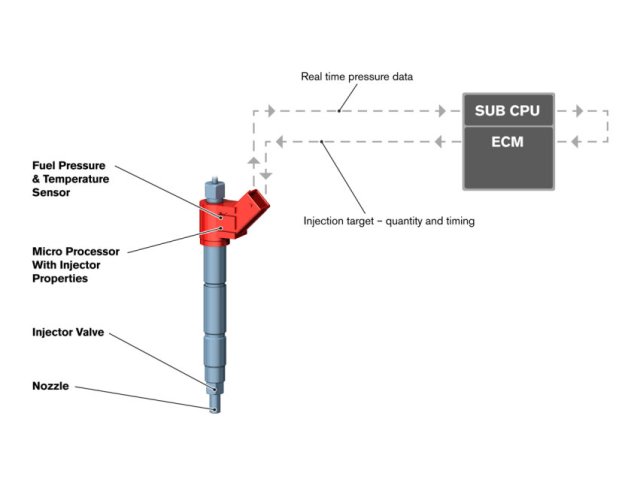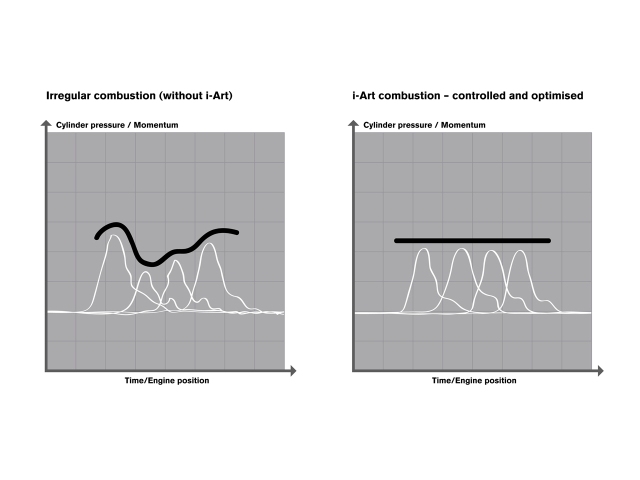
Yours truly was inexplicably drawn to an Autoblog article titled Volvo promises new diesels, 8-speed auto. With a bare minimum of commentary, the “article” was, primarily, a cut-and-paste of a press release that included the following passage:
Volvo Car Group’s new engine family VEA (Volvo Engine Architecture) will be launched this autumn with world-first i-ART technology that helps to cut fuel consumption in the new diesel engines.
By featuring pressure feedback from each fuel injector instead of using a traditional single pressure sensor in the common rail, i-ART makes it possible to continuously monitor and adapt fuel injection per combustion in each of the four cylinders.
…”Each injector has a small computer on top, which monitors injection pressure. Using this information, the self-adapting i-ART system makes sure that the ideal amount of fuel is injected during each combustion cycle.”
The combination of higher injection pressure and i-ART technology gives the customer an engine with improved fuel economy, considerably lower emissions and high performance output as well as a powerful sound character.
Hmmm…i-ART? Pressure feedback from each fuel injector in a diesel? Improved fuel economy, considerably lower emissions and high performance output? This all sounds very familiar, doesn’t it? Indeed, it does, for we wrote about this back in October 2012, when we commented on Toyota’s 24 September 2012 TMC Announces Status of Its Environmental Technology Development, Future Plans press release.

The i-ART (intelligent-Accuracy Refinement Technology) autonomous closed-loop diesel fuel injection control system, in fact, goes back even further than that, and was pioneered and first announced by Japanese supplier Denso (a part of the Toyota Group conglomerate) back in December 2011! Our prior article also noted that
In essence, this system equips each injector with a pressure sensor that communicates its fuel pressure to the engine ECU and, in doing so, significantly reduces exhaust emissions and increases fuel efficiency, compared with the conventional open-looped technology that does not have feedback function from the injectors. i-ART-equipped versions of the 3-liter 1KD-FTV 4-cylinder diesel debuted in the Brazilian market version of the Hilux pickup truck in April 2012.
Given this information, it strikes us as quite misleading that Volvo’s Vice President for Powertrain Engineering Derek Crabb has the gall to say that
i-ART technology…is a breakthrough comparable to when we invented the groundbreaking lambda sensor for the catalytic converter in 1976. It’s another world-first for Volvo”
Um… sure, Volvo deserves credit for the lambda sensor (and we’ll also give them credit for the illustrations and graphics that accompany this article), but i-ART is a world-second for the Swedish carmaker. Equally annoying is the fact that all the Volvo i-ART write-ups pretty much parrot the world’s-first angle, with one exception as of this writing: TheGreenCarWebsite.co.uk, whose Paul Lucas did note that i-ART was developed by Denso and that
It’s not the only time we will see the technology employed however: you can also look out for i-ART systems in Toyota’s forthcoming 3.0litre commercial diesel engines.
Well… perhaps forthcoming in Europe, but by the time i-ART Volvo diesels go on sale, Toyota will have been offering i-ART-equipped Hilux pickup trucks in, at least, Brazil for 1½ years!


It seems that Volvo / Toyota mechanical sharing goes beyond i-ART. That Volvo press release also touts their new 8-speed automatic transaxle. Alex Dykes of The Truth about Cars makes a very compelling argument that it is none other than Toyota/Lexus’ U880 unit that is currently used only in North America’s RX 350 F Sport.